Thank you to Heidi Rabinowitz of The Book of Life Podcast for creating this book list for me to cover. She noticed that my Best #OwnVoices Children’s Books had Jewish books about the Holocaust but not in modern times. I didn’t know how to identify Jewish authors as there isn’t a group blog or database of children’s books categorized in this way. Her point is that Jewish books should be considered part of diverse books.
In the spirit of inclusion, I offer up her list with my take on how we are more alike than different. Where I live in Newton, Massachusetts, we have a large Jewish population with many J’Asians (my daughter’s term) of mixed-race Jewish-Asian Americans. I hope you enjoy my connections to this Jewish #OwnVoices list.
I thought I had a basic understanding of Jewish customs because I live in a town with a large Jewish population. My kids have attended many bar and bat mitzvahs for example, but I always thought of these as coming-of-age ceremonies based on hitting a certain birthday, rather than a ceremony about becoming a good person.
And while my kids’ public schools close for the Jewish High Holidays, I did not know about the ceremony of Tashlich for Rosh Hashanah which sounds like a lovely and cathartic way to prepare for the new year.
I also loved these books for the crash course on Yiddish words that it gave me. Many of these words are firmly embedded in the English language, so much so, that I know that my family uses words like “mensch” but without realizing that women can be “mensches” too.
My thanks again to Heidi Rabinowitz for patiently helping me to learn more about Jewish culture in KidLit. How about you? What are your favorite children’s books with Jewish characters? Thanks for sharing!
38 Contemporary #OwnVoices Jewish Children’s Books
#OwnVoices Jewish Picture Books
New Year at the Pier: A Rosh Hashanah Story by April Halprin Wayland, illustrated by Stephane Jorisch
Part of the Jewish New Year tradition is reflecting on the mistakes of the past year. In this story, Izzy and his family celebrate the ceremony of Tashlich by casting stale bread into the ocean, thus throwing away what they are sorry for. Izzy apologizes to the people on his “I’ve made mistakes” list and then symbolically tosses the error into the sea. It’s a beautiful way to physically let go of mistakes thus creating a clean slate for the new year. Food for thought: how does this tradition compare to the Catholic practice of confession? [picture book, ages 5 and up]
The Cholent Brigade by Michael Herman, illustrated by Sharon Harmer
This is similar to a Stone Soup story in that a community comes together to share a delicious meal. In this story, Monty Nudelman is a mensch who shovels everyone’s house after a big storm. From house to house, he cleans off cars and clears sidewalks ensuring that his neighbors can get out to shop for the Shabbat meal. On the last house, Monty pulls his back. His neighbors notice his absence at the synagogue and rally with their Sabbath stews. Monty shares the feast with the neighbor kids who brought the food. A recipe for Cholent stew is included in the back. This story will make you feel warm and fuzzy as a hot bowl of stew! Food for thought: pair with other picture books about community meals. [picture book, ages 4 and up]
Bring Back the Babka! by Marilyn Wolpin, illustrated by Madison Safer
Mama’s just baked cinnamon babka goes missing and the rabbi is coming for dinner! Sammy and Sol set out with their dog to help. Each neighbor they talk to offers them food, a dessert, and a take on life. the babka never turns up but the neighbors join the Shabbat dinner and find that life is sweeter when shared. [picture book, ages 3 and up]
Mitzvah Pizza by Sarah Lynn Scheerger
I am familiar with the Bat Mitzvah and Bar Mitzvah celebrated in my town, but I had no idea that “mitzvah” is a Jewish concept of doing a good deed. This picture book is based on a real pizza restaurant in Philadelphia where people can pre-purchase a slice of pizza for those who need it. The slices are symbolized by sticky notes on a wall where the gift giver can write a positive message. In this story, Missy has a fun day planned with her father that includes a stop at a pizza place. She makes a new friend who chooses cheese pizza and when the girl uses sticky notes to pay for it, she learns about this giving tradition. Ultimately, with the money Missy has earned, she decides to add to the wall of sticky notes. Food for thought: Another “mitzvah” good deed story is A Hat for Mrs. Goldman by Michelle Edwards. For anyone inspired to commit acts of kindness, my Random Acts of Kindness posts are here, here, and here. [picture book, ages 4 and up]
I Say Shehechiyanu by Joanne Rocklin
Shehechiyanu is a Jewish blessing for saying thank you when experiencing something new for the first time. This lovely picture book reminds the reader to be grateful for new experiences. Food for thought: pair with We Are Grateful: Otsaliheliga by Traci Sorell and these other picture books about gratitude.
Here is the World: A Year of Jewish Holidays by Leslea Newman
In rhyming couplets, this picture book celebrates a year of Jewish holidays and seasons. The back matter has more detailed descriptions including crafts and recipes. Food for thought: how does Rosh Hashana compare to Lunar New Year celebrations? [picture book, ages 4 and up]
Do Not Eat This Book!: Fun With Jewish Foods & Festivals by Beth Kander, illustrated by Mike Moran
In rhyming text, readers learn about Jewish holidays including Bebbeleh, Hanukkah, Purim, Seder, Shabbat, and Tu B’Sehvat, and the special foods each one celebrates. [picture book, ages 5 and up]
The Always Prayer Shawl by Sheldon Oberman, illustrated by Ted Lewin
Hinting at the Russian Pogroms, this story centers on Adam, a boy who immigrates to the United States with his family and his grandfather’s prayer shawl. It is this shawl that connects him to family history. And while things are very different in this new country, the prayer shawl reassures him of who he is. Over time, as the prayer shawl wears out, Adam replaces each element: the fringes, the collar, and finally, the cloth itself. Now a grandfather himself, Adam passes down the family history and the prayer shawl to his grandson. This is a beautifully told story of family and resiliency. Food for thought: pair with Show Way by Jaqueline Woodson. [picture book, ages 5 and up]
Tía Fortuna’s New Home: A Jewish Cuban Journey by Ruth Behar
From Ruth Behar in Nerdy Book Club:
“The Sephardim descend from Jews who lived for centuries in Spain (Sefarad in Hebrew) but were expelled in 1492 for their religious beliefs. They dispersed to many countries, including Turkey, where my ancestors settled. In the early twentieth century, many Sephardim left for the United States, Israel, and Latin America. Some settled in Cuba, including my family, only to start a new life yet again in New York and Miami. Throughout these migrations, they never forgot their nostalgia for Spain, continuing to speak an old Spanish dialect, or Ladino, as it came to be known…
Little Estrella is saddened, but Tía Fortuna encourages her to enjoy their last day at the Seaway and not think about mañana. Tía Fortuna’s acceptance of change lifts Estrella’s spirits. Still, her auntie wears lucky eye bracelets and keeps hamsas around, whispering prayers for mazal bueno—good luck. Tía Fortuna makes borekas for Estrella, filled with potatoes and cheese and also with esperanza, reminding her that her ancestors found hope wherever they went. In this way, she gently passes on her heritage to her niece.
After Tía Fortuna closes the door to her casita and pockets the key, she says goodbye to the palm trees. They whisper back adiós, adiós, adiós, for the world is a magical place. Estrella’s mother arrives and they drive to Tía Fortuna’s new home . . . which turns out to be what we call a home, often referred to as an assisted living facility. Again, Tía Fortuna insists on finding hope and accepting a new beginning. Though now far from the sea, there are banyan trees that she hugs and that whisper back, hola, hola, hola. And the butterflies flutter. As Estrella excitedly asks when she can visit again, Tía Fortuna whispers, “Mashallah, God willing.” So my abuela and abuelo would say, never assuming another day was a given, treating each day as a blessing.” [picture book, ages 4 and up]
The Very Best Sukkah: A Stroy from Uganda by Shoshana Nambi, illustrated by Moran Yogev
Did you know that there is a Jewish community in Abauyudaya in Uganda? Sukkot, a seven-day event, is Shoshi’s favorite holiday and she is excited to build her sukkah hut and win the award for the most beautiful one in the village. The sukkah huts are decorated with local fruits including bananas, passion fruits, mangoes, pineapples, and jackfruits. The competition for the best sukkah is fierce! Everyone goes all out to decorate their sukkah with their own special touches. When a storm destroys her neighbor’s sukkah, all the villagers pitch in, including Shoshi. Their rabbi reminds them that Sukkot is all about community and helping each other. The winning sukkah is a reminder of this holiday! [picture book, ages 4 and up]
Kibitzers and Fools by Simms Taback
This is like having a grandfather who is a stand-up comedian at your disposal for family gatherings who intersperses Yiddish words in his short stories and jokes thus passing down culture, humor, and language to the next generation. Food for thought: do these stories remind you of folk tales? Check out more here. Pair the last story with Ming Lo Moves the Mountain. [picture book, ages 4 and up]
Rebecca’s Journey Home by Brynn Olenberg Sugarman and Michelle Shapiro
The Stein family eagerly awaits the newest member of their Jewish family, a little girl named Le Tai Hong, who will now be called Rebecca in English and Rivka in Hebrew. This is their adoption story of becoming a multicultural family celebrating Vietnamese, American, and Jewish culture and traditions. [picture book, ages 5 and up]
Two New Years by Richard Ho, illustrated by Lynn Scurfield
This is such a beautiful picture book with the illustrations reflecting both Chinese cut paper art, as well as watercolor illustrations depicting two cultures. Richard Ho shows how two New Year celebrations, one Jewish and one Chinese, mean a chance to celebrate two times and in two different ways, and yet have many similarities. This book depicts the richness of a modern multicultural family. [picture book, ages 3 and up]
Hanukkah Upside Down by Elissa Brent Weissman, illustrated by Omer Hoffmann
Review by A Kid’s Book A Day:
“A cute Hanukkah story about two feisty cousins who enjoy debating each other while also appreciating their friendship and the interesting aspects of the other’s life. The story cleverly weaves in details of both the holiday and life in New York and New Zealand.” [picture book, ages 4 and up]
 #OwnVoices Jewish Early Chapter Books
#OwnVoices Jewish Early Chapter Books
Sam and Charlie (and Sam Too) by Leslie Kimmelman
I’m adding this wonderful series to my diversity early chapter books list. Sam and Charlie are neighbors and friends who just happen to be Jewish. Sam too is Sam’s little sister. I love the play on names with traditional boys’ names for the girl characters. Jewish culture is interwoven into sweet stories about sharing and friendship. [early chapter book series, ages 6 and up]
#OwnVoices Jewish Middle Grade
Penina Levine is a Hard Boiled Egg by Rebecca O’Connell
I am fond of sixth-grader Penina Levine. She has a cute but annoying little sister who seems to get all the attention at home. In this book, Penina has an Easter card writing assignment that she objects to. It’s a rookie mistake on the part of her teacher to insist that she complete it. Penina makes a stand and learns that she’s part of a long tradition of Jews who fought for religious freedom. The Holocaust is also introduced gently through a visit from a classmate’s grandmother who tells her story of survival which reminds me of R. J. Palacio’s White Bird. Fans of Sara Pennypacker’s Clementine series and Annie Barrow’s Ivy and Bean series will enjoy this similar diversity pick. [middle grade, ages 8 and up]
Hereville: How Mirka Got Her Sword by Barry Deutsch
This is a quirky but appealing graphic novel, the first in a trilogy, about an Orthodox Jewish girl who fights trolls and other monsters in a quest to get a sword. Like Lumberjanes and Foiled, there is magical realism at work, making for a particularly fun read. This story also has the feel of a fairy tale from a long time ago, though it’s actually set in modern times. [graphic novel, ages 8 and up]
p.s. For those who like Jewish fantasy, I wanted to include Anya and the Dragon series by Sofiya Pasternack.
When Life Gives You OJ by Erica S. Perl
I have been a fan of Erica S. Perl’s picture books since I met her ten years ago, but she’s really coming into her own as the author of Jewish middle grade. She really nails the balance between believable characters and humor against the backdrop of navigating middle school friendships. I really loved the relationship between their granddaughter, Zelly, and her grandfather, Ace. Perl doesn’t make this saccharine perfect. Her grandfather has his own flaws which Zelda grapples with, along with his own ideas of how she can persuade her parents into letting her get a dog. Zelly also struggles with balancing friendships both new and old, as well as knowing how to deal with the bully of the school. Jewish culture comes mostly in the form of Yiddish words sprinkled throughout the book. This is a wonderful book for any kid who has ever desperately wanted a dog. [middle grade, ages 8 and up]
Shabbat Sabotage by Emma Carlson Berne
Interview with the author from From the Mixed Up Files of Middle Grade Authors:
“I was a pretty fearful person growing up (actually, I’m still a total coward), and one of my sons was kind of a fearful child, so I really wanted to write about fear and secrets and how those two things can prey on each other. I like the idea that at summer camp, where adults sort of fades into the background, that’s where the characters can really roll in around in the very real, sometimes very dark, world of kids alone, together.
Maya really is not a camp kid but I like to think that she becomes one over the course of the book. She doesn’t like getting dirty, she’s afraid of all kinds of things – swimming is the main one in this story – and she’s just not sure about the whole togetherness-in-a-cabin, sleeping-away-from-home thing. It takes a place like Camp Shalom and a friend like Dani to show her that she can grow to love camp while still being herself.” [middle grade, ages 8 and up]
All Three Stooges by Erica S. Perl
This was, by far, my favorite grade novel on this list. Noah and his best friend Dash have always bonded over humor. They have special sleepover nights where they dissect comedy with Dash’s father Gil. Everything changes when Gil dies, and Noah doesn’t understand why Dash is pulling away. Erica S. Perl shows the reader the human connection between grief and humor, in this bar mitzvah novel about friendship, clinical depression, and laughter. [middle grade, ages 9 and up]
The Whole Story of Half a Girl by Veera Hiranandani
I read Veera Hiranandani’s excelling book, The Night Diary before I read this one, her debut middle grade novel, so I am spoiled in terms of knowing how well she writes. In this book, I found her characters to be slightly flat. The story is about a girl who is half Jewish, half South Asian (like the author), and coming to terms with her mixed-race identity amid switching from a small liberal private school to a large public school. Her family is also grappling with the loss of her father’s job and the clinical depression that he suffers from this trauma.
I like how Hiranandani describes racist microaggressions when Sonia starts her new school. Her peers can not seem to fathom someone who is “Indian from India” or mixed race. Her public school is segregated both racially and along socio-economic lines, putting Sonia as the bridge between these two divides. I would use this book as part of a unit exploring racism and microaggressions. [middle grade, ages 9 and up]
Confessions of a Closet Catholic by Sarah Darer Littman
The premise of this middle-grade novel about a Jewish girl struggling with her religious identity really drew me in, but the lead character, Jussy, did not come across as a tween. Either she’s an old soul or her tween voice came across as too adult. I’m not sure there are many tweens who struggle with their spiritual identity to relate to Jussy. I also thought the ending was too pat. The relationships, particularly since they are boy/girl crushes, feel like they are from an older era and not relatable to this generation of LGBTQ+ accepting kids. Finally, my copy of this book which I got from the library did not have enough margin around the pages, such that the words were so close to the binding that it was difficult to read. [middle grade, ages 9 and up]
Becoming Brianna by Terri Libenson
by Terri Libenson
Review from Ms. Yingling Reads:
“Brianna, who is already dealing with the fact that her parents have divorced, has given in to her mother’s desire for her to have a significant bat mitzvah celebration. The family is not terribly religious (Brianna’s father is not Jewish), but Brianna understands that this is somehow very important to her mother and acquiesces even though she has a lot of anxiety about public performance. Not only that, but she is struggling to learn Hebrew, and is not confident about the speech that she has to write, especially since she leaves it to the last minute. She is also at odds with her best friend, Emmie, who is not only tired of hearing about the bat mitzvah but also doubts that popular girl Zoe is really Brianna’s friend. Zoe texts Brianna frequently and makes an effort to talk to her and hang out, but the two don’t really click, and Emmie feels that Zoe has heard rumors about the bat mitzvah party and just wants to be invited. Going back and forth in time from Brianna’s preparations to the present day, we see a panoply of anxiety-producing events through which Brianna must travel to prepare for her coming-of-age ceremony, and witness how she and the people who support her deal with them.” [middle grade, ages 8 and up]
“Freedman’s My Basmati Bat Mitzvah, Weissman’s The Length of a String, and Rosenberg and Shang’s This is Just a Test all cover Jewish culture and coming of age ceremonies, but since this is a key component to the middle school experience for many young readers, we can use many more books on the topic.” from Ms. Yingling Reads
Going Rogue (At Hebrew School) by Casey Breton
Review by Books My Kids Read:
“There are not a lot of books that focus on Jewish boys. There have been a few recent books that have Jewish girls as the main protagonist, but not boys. This solves that problem while easily appealing to boys and girls everywhere.
The story focuses on Avery Green. Like every kid I know, he doesn’t like going to Hebrew School. He doesn’t understand why it is necessary and would rather be playing football, doing some science experiments, or talking about Star Wars. The story itself isn’t about Hebrew school, it is merely an entry point and works regardless of your religious background. The story is about being a good person.” [middle grade, ages 9 and up]
The Trouble with Good Ideas by Amanda Panitch
Review by Ms. Yingling Reads:
“Leah Nevins and her family have just moved from their home back to live near her great-grandfather, Zaide, who is 93 years old. She had to leave her Jewish school and felt awkward and unable to make friends in her new school. The one thing she does love is getting together with her extended family on Saturday afternoons at Zaide’s quirky home, which is an old telephone office. She plays chess with her great-grandfather and hangs out with her cousins. When her grandfather starts to have memory issues, she overhears her parents discussing sending him to a nursing home. Leah is not about to support that idea, so casts her net wide to find a solution. She latches onto a story that Zaide told her about making a golem back home in Poland, and when she comes across a bag of dirt with a piece of paper with a word written on it, she takes the ingredients, follows the instructions, and creates a golem of her own. Its name is Elsa, and it looks like a regular girl Leah’s age. Leah is relieved that she can leave Elsa with her grandfather to make sure that he doesn’t get into trouble. She is given pause when Leah shows up at her school during lunch and claims it is boring when Zaide is napping. Elsa seems to have more success making friends than Leah does. When Elsa becomes more and more unreliable, Leah learns a bit more about golems from Zaide and has to come to terms with the reality of his condition.” [middle grade, ages 8 and up]
No Vacancy by Tziporah Cohen
by Tziporah Cohen
Review by Ms. Yingling Reads:
“Summer vacation, kids working, a new residence that isn’t haunted– I love all of these things! The best part is that although Miriam isn’t the biggest fan of moving and leaving her friends, she doesn’t complain. She rolls up her sleeves and helps out with making beds, cleaning, and doing things to help her family and not add to her parents’ burden. I also liked the bits of Jewish culture, including Uncle Mordy, who keeps kosher and won’t eat in the diner and also won’t pursue a relationship with Maria because she is Catholic. The fact that the girls manufactured the picture of the Virgin Mary and let the ruse go on longer than it should have was interesting; on the one hand, it benefits their families and doesn’t really hurt anyone, but on the other, it’s lying. Since I file all religions under fiction, I was okay with this– the girls have just added one more fictional story to a canon of fictional stories.” [middle grade, ages 9 and up]
More Contemporary Jewish Children’s Books
The Miracle Seed by Martin Lemelman
The Judean Date Palm tree was thought to have been lost more than two thousand years ago when the Jewish people rebelled against the Roman Empire. This palm tree was believed to have medicinal properties to cure diseases such as malaria, toothache, and cancer. In 1963, a jar was discovered with six Judean Palm tree seeds. In 2004, two female scientists joined forces to bring the tree back to life. This is a scientific journey that demonstrates how exciting science and archaeology can be! The graphic novel format makes it easy to read. [nonfiction middle grade graphic novel, ages 8 and up]
How to Find What You’re Not Looking For by Veera Hiranandani
Review by Ms. Yingling Reads:
” I love that this is based on the author’s own background of having a Jewish American mother and father from Mumbai. We need more stories about families who have been in the US for quite a while; it might help people understand how unnecessary and hurtful the question “Where are you from?” can be. Working in the current event of Loving vs. Virginia gives this a wider historical perspective. The long-time family bakery was interesting, and the hard work involved in such an enterprise, and the economic difficulty of running one, was poignant. Leah’s struggles with her relationship with Raj, and the parents’ objections, were completely realistic for the time, and a good example of how things have changed, if only incrementally. Ari’s learning disability (dysgraphia) is one that I haven’t seen portrayed in middle-grade literature, and the depiction of how she deals with it, how her parents feel about it, and the efforts of the new, young teacher are all interesting. This story combines several different elements in a compelling way that I think will make it a popular choice with many readers.” [middle grade, ages 8 and up]
Linked by Gordan Korman
Review by Ms. Yingling Reads:
“Chokecherry, Colorado is a smallish town where most of the students have been together for years. There are paleontologists who have come to work on a dig that has uncovered some dinosaur remains as well as fossilized dinosaur poop, and their children are navigating middle school. When serial prankster Link, whose father is a local real estate agent who hopes to turn Chokecherry into an Orlando-like dinosaur tourist destination, gets caught putting peat moss in the dig offices, his father bans him from playing sports. Since that’s the root of his popularity, he’s angry, but soon there are other things to occupy his thoughts– a swastika is painted on a school wall. Dana, whose parents work on the dig, is the only Jewish student in the school, so she is greatly affected. Told from various points of view, from seventh-grade president Caroline, who wants to see more school spirit, to art club president Michael, who has a great grasp of logistics, we see how this affects the school. It’s not just one swastika; there are others, from a tarred one on a baseball banner to paint on the ice cream freezer. The students learn about Chokecherry’s past, which includes the Night of a Thousand Flames back in the 1970s when the Ku Klux Klan was still active. Link finds out from his mother that his grandmother is Jewish, but was given to French nuns as a very small child to keep her safe. Her entire family perished, and she only learned about her past a few years ago. Link reacts strongly to this news, and after Dana brushes off his request for assistance “on being Jewish” by telling him he should think about a bar mitzvah, he contacts a rabbi in the nearest synagogue and starts fast-tracked preparation for the coming of age ritual! After lots of class time spent learning about the Holocaust (which the students claim to get tired of, which is sadly very true to life), students feel like they need to DO something, and the idea of a paper chain, inspired by a real-life school that tried to collect six million paperclips to commemorate the Jewish victims of the Holocaust, takes hold. Soon, the town is in the sights of ReelTok, a TikTok star, who comes to town to make inflammatory posts and generally stir things up. Undaunted by problems with paper supply and chain storage, the project continues, and Link works tirelessly to prepare for his bar mitzvah. When the truth comes out about who painted the swastikas, how will the various characters be affected?” [middle grade, ages 8 and up]
The Halloween Moon by Joseph Fink
Review by Ms. Yingling Reads:
“Esther Gold loves Halloween so much that even her bat mitzvah was Halloween-themed, and now that she is thirteen, her parents have informed her that she is too old to go out trick-or-treating. She is crushed; she isn’t wild about the candy but loves the costumes and the traditions of the holiday. To circumvent her parent’s unreasonable dictum, she tells them that she and her friend Agustín are going to a movie, and they tell her not to wake them up when she comes in! There is all manner of strange things going on in the town, and when the adults all seem to be falling asleep, including their parents, Esther and Agustín, along with classmate Sasha, seek the help of Mr. Gabler, who seems to be unaffected. He always gives out toothpaste because of his occupation, but proves again and again that he “wasn’t always a dentist” by using un-dentistlike skills! There’s also the creepy Dan Appel, the strange robbery at an illegal art collection, and a terrifying plunge into the “Halloween dream”. Will Esther and Agustín be able to wake up everyone in their town?” [middle grade, ages 10 and up]
The $150, 000 Rugelach by Allison Marks and Wayne Marks
Review by Ms. Yingling Reads:
“I enjoyed some of the back histories of the families, and it was good to see Jewish representation, especially since there were some recipes as well. Jack was an over-the-top kind of character and a nice foil for Jill’s more quiet and introspective style. Their struggles working together were realistic. Farnsworth reminded me a bit of Garrison Griswold in Bertman’s The Book Scavenger but was more evil. There was a lot of comic relief with the Farnsworth products and with Chad’s ridiculous golfing outfits.” [middle grade, ages 8 and up]
Mighty Inside by Sundee Frazier
Review by Ms. Yingling Reads:
“Melvin lives with his family in Spokane, Washington in 1955. He has an older brother and sister (Chuck and Marian), as well as a younger sister, Maisy, who wants to be a newspaper reporter. His grandmother and other relatives live nearby, and the family has a small community of Black friends who get together since most of their school and community are white. Melvin has a pronounced stutter, plays the accordion, and would rather just keep to himself, all things that his brother says mark him as a “square” and will run him into trouble when he starts high school. His parents are fairly supportive, but also push him to do more things than he is really comfortable with. Starting at Grover Cleveland High School is stressful, especially when there are bullies like Gary and Troy who call him “Skip” and are also very prejudiced against Blacks. Even though he doesn’t realize it at first, Melvin is lucky to meet the talkative Lenny Carini, who lives with his mother above the Harlem Club. His father, who was Jewish, was killed in the war, and the two are struggling, although Lenny plays saxophone and is hoping to play on the local talent show, Starlit Stairway, and is enthralled with the band at the club. Having a friend makes a difference, and Lenny encourages Melvin to be braver. He actually talks to Millie Takazawa, on whom he has a big crush, and learns more about her life, including the fact that her family was in a Japanese American internment camp during the war when she was very small. Lenny and Melvin work on their act and do get a chance to play in the local program. Melvin’s sister, who is very popular, is in the running for homecoming queen, and Melvin has to take a family friend instead of Millie. Things don’t go well at the dance, and Melvin and the group want to leave the dance early and go to the Harlem Club to see Lenny play. The problem is that the club, which is run by a Black man, is whites-only every day but Sunday and Monday, and the dance is on Saturday. Lenny’s mother manages to get them in, but things go badly wrong. Lenny and his mother need a place to stay, and when they show up at Melvin’s house, a long-lost connection between the two families is discovered.” [middle grade, ages 8 and up]
Sydney A. Frankel’s Summer Mix-Up by Danielle Joseph
Review by Ms. Yingling Reads:
“This included a lot of information about growing up in a Jewish family but did not involve a bar or bat mitzvah, which is a bit unusual and very welcome! Sydney does get some questions about her cultural background and is able to clear up some misconceptions and stand up for herself, which I especially liked. Friend drama is always a topic my students request, and this has a tiny bit of middle school nascent romance as well.” [middle grade, ages 8 and up]
Ripped Away by Shirley Reva Vernick
Review by Ms. Yingling Reads:
“Abe Pearlman has a huge crush on Mitzy, but she doesn’t know he exists. When he is out and about, he sees a new sign for a fortune teller and, intrigued, stops in. The fortune teller, Zinnia, tells him there is something interesting about his aura, and before he knows it, he blacks out. When he wakes up, he is in the Whitechapel neighborhood of Victorian London. He is a young man named Asher, who lives in a tenement with his mother and works at a Jewish Working Man’s Club for Mr. Diemshutz. While a bit discombobulated, he seems to have all of the information he needs lingering in the corners of his mind, including some foreign words and phrases. As he is getting his bearings, he finds that Mitzy has also been to Zinnia and has taken on the personality of Maya, an upstairs neighbor, who is blind. She lives with her mother and uncle, who is a butcher. When a young woman is murdered in one of the infamous “Jack the Ripper” killings, the Jewish community comes under scrutiny. Investigators talk to Mr. Diemshutz, and police go through the neighborhood asking to see residents’ knives. Maya’s uncle, Duvid Kraskov, is arrested because he won’t give the police information about his knives. Feeling that he is stuck in the Victorian time period until he can save someone’s life, Abe thinks Duvid might be the one he needs to save. He manages to get information from the man who clears his name, but he doesn’t want Maya and her mother to know. When Abe is still stuck in the past with Mitzy, the two work to try to figure out what else they need to do to return to their own time.” [young adult, ages 12 and up] *This is set in Victorian England. It is set in the past but I include it because it’s not a WWII war story.
Related Posts:
10 Jewish Folktale-Inspired Books
10 Award Winning Jewish Books for Kids and Kid Lit Blog Hop
Top 10: Best Interfaith Jewish Children’s Books (ages 3- 16)
Young Adult Post WWII Jewish War Story: What I Saw and How I Lied
More sources for recommended Jewish KidLit
The Book of Life, A Podcast About Jewish Kidlit (Mostly)
Sydney Taylor Book Award winning titles from the Association of Jewish Libraries
“Love Your Neighbor” booklists from Association of Jewish Libraries
Tablet Magazine’s Jewish children’s book reviews
The Jewish Book Council’s reading lists
PJ Our Way, Jewish chapter books
PJ Library, Jewish picture books
To examine any book more closely at Amazon, please click on image of book.
As an Amazon Associate, I earn from qualifying purchases.
Follow PragmaticMom’s board Multicultural Books for Kids on Pinterest.
Follow PragmaticMom’s board Children’s Book Activities on Pinterest.
My books:
Food for the Future: Sustainable Farms Around the World
- Junior Library Guild Gold selection
- Selected as one of 100 Outstanding Picture Books of 2023 by dPICTUS and featured at the Bologna Children’s Book Fair
- Starred review from School Library Journal
- Chicago Library’s Best of the Best
- Imagination Soup’s 35 Best Nonfiction Books of 2023 for Kids
Amazon / Barefoot Books / Signed or Inscribed by Me

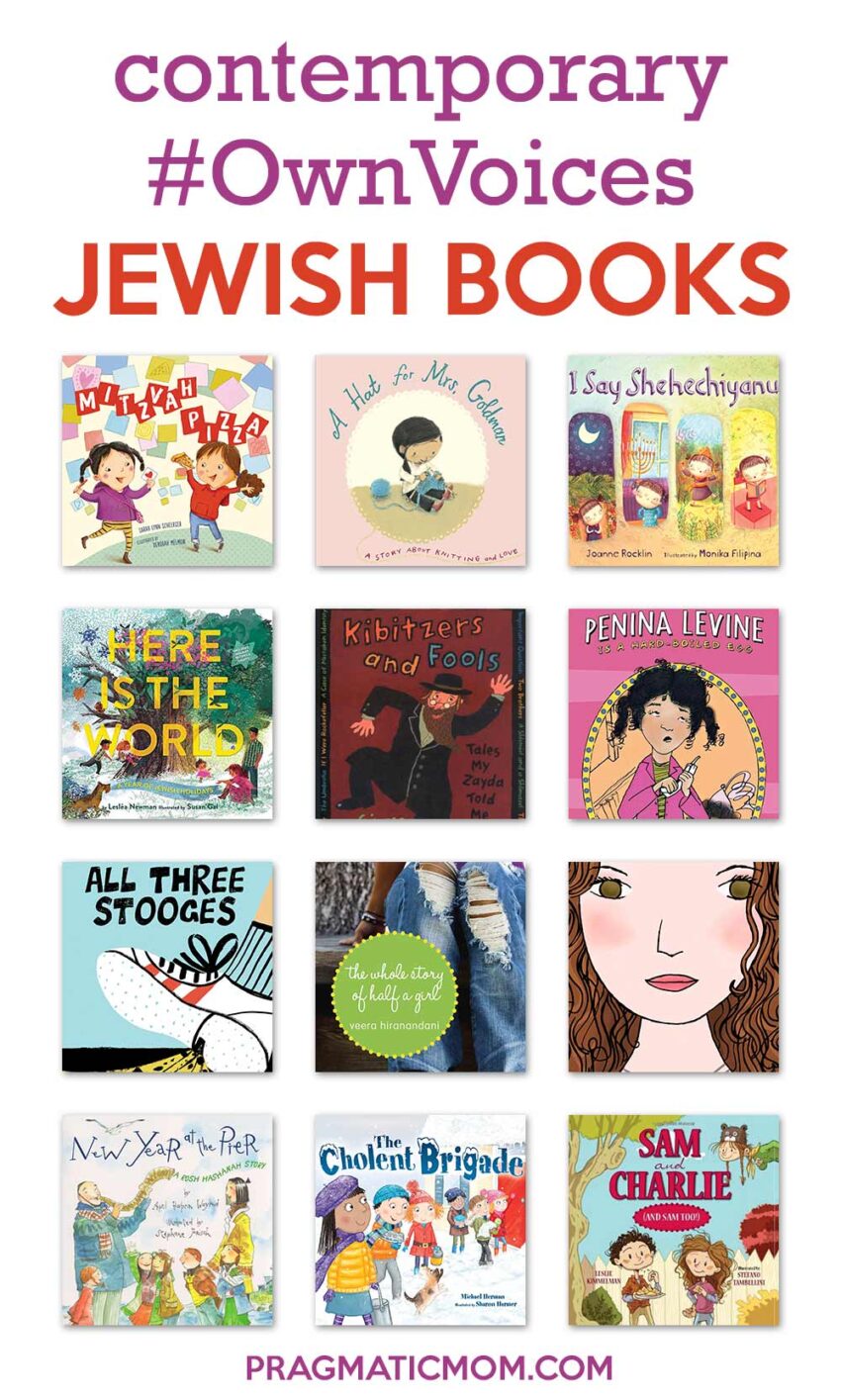

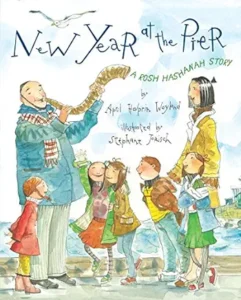
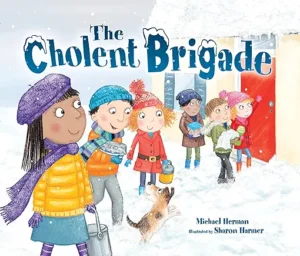
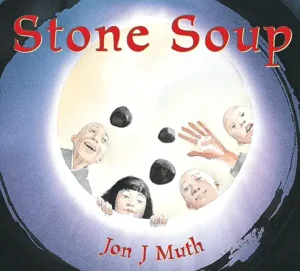
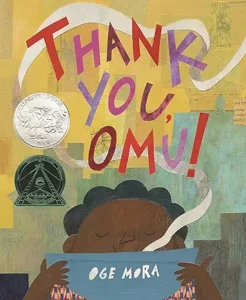
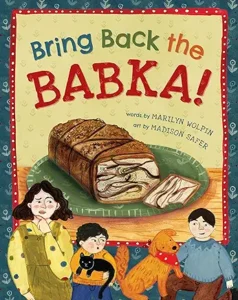
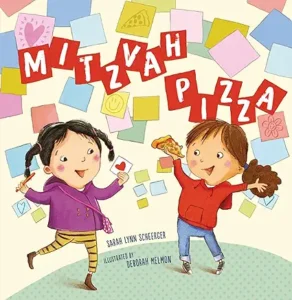
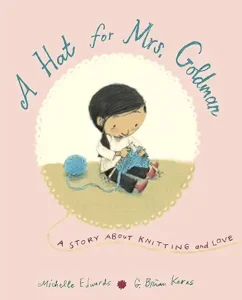
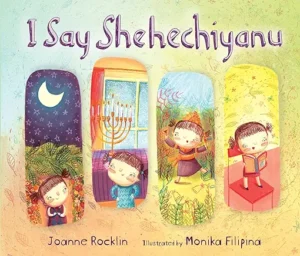
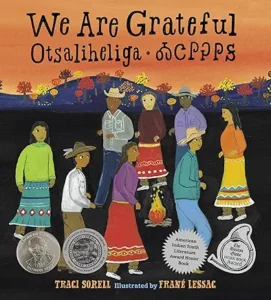
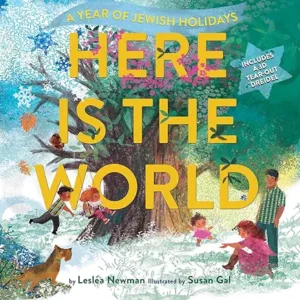

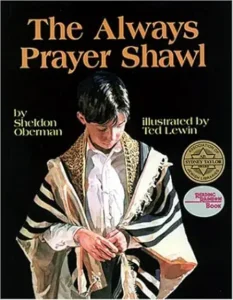
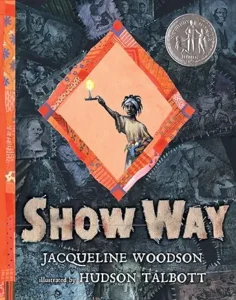
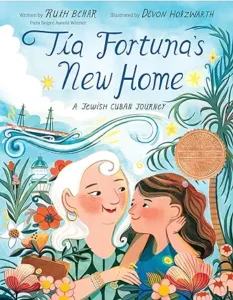
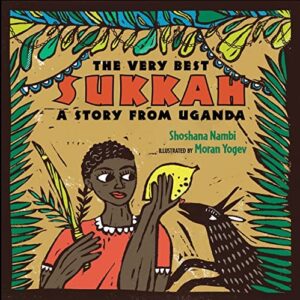
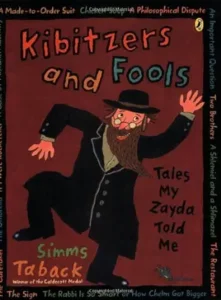
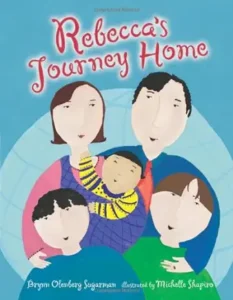

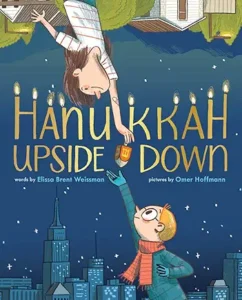
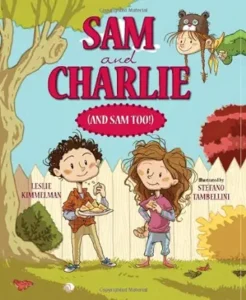
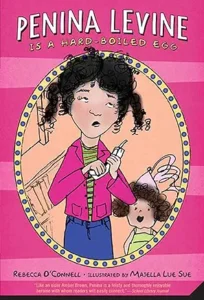
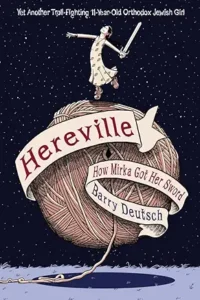
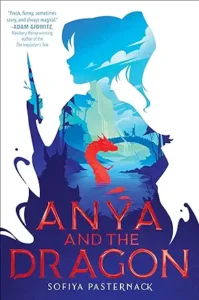
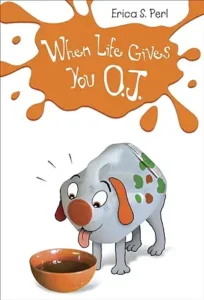
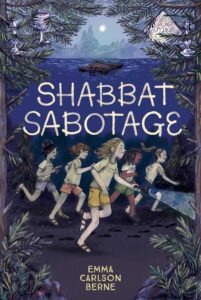
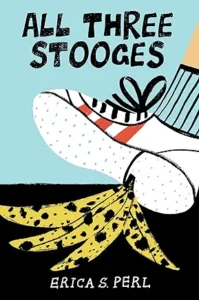
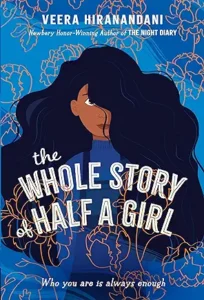
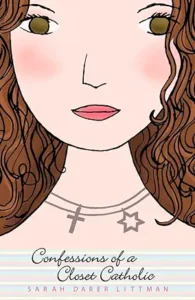
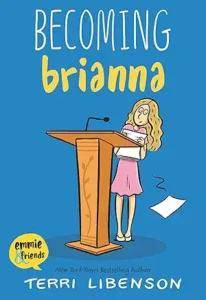
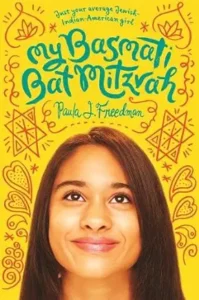
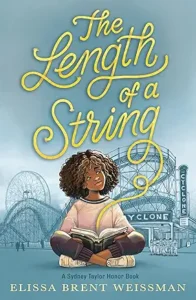
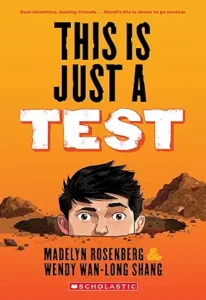
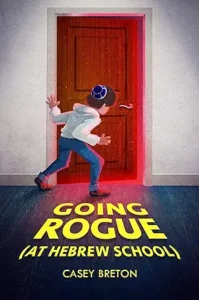
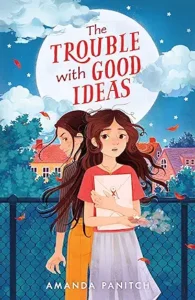
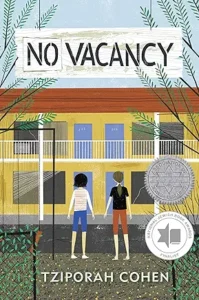
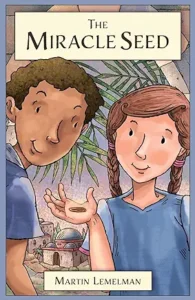
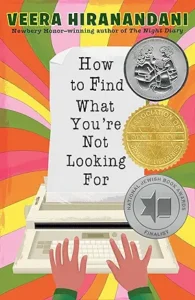
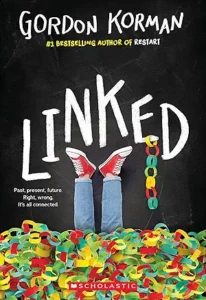
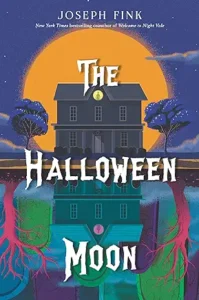
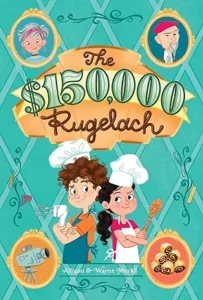
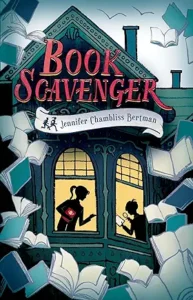
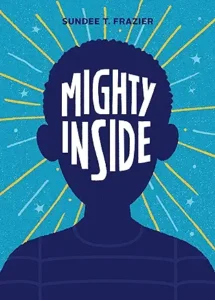
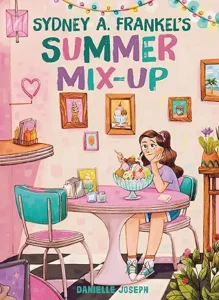
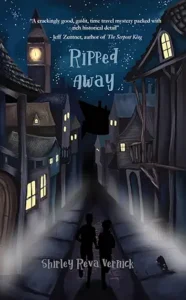
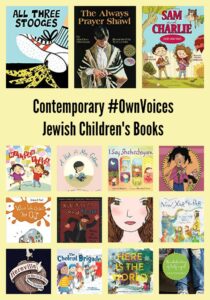
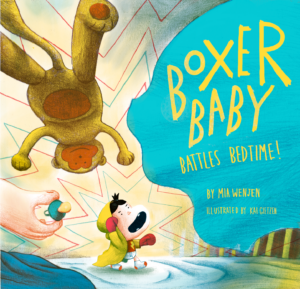
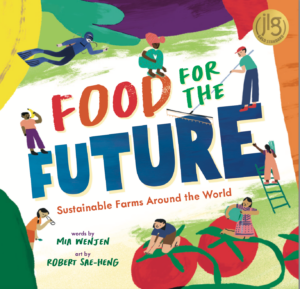

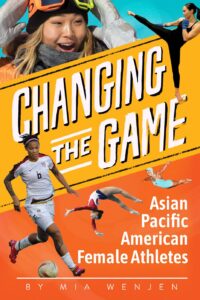
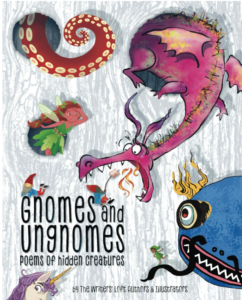

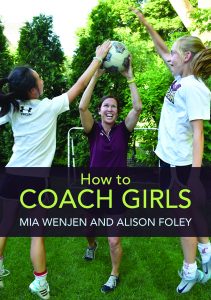
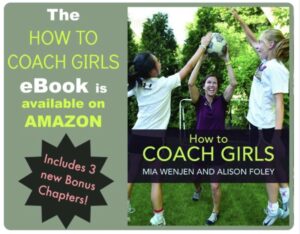
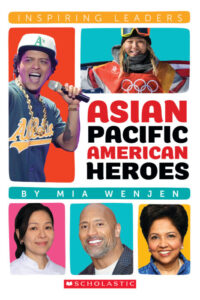

Thank you, Mia, for this wonderful inclusive post!
Thank you for including Jewish books in diversity lists! This is wonderful.